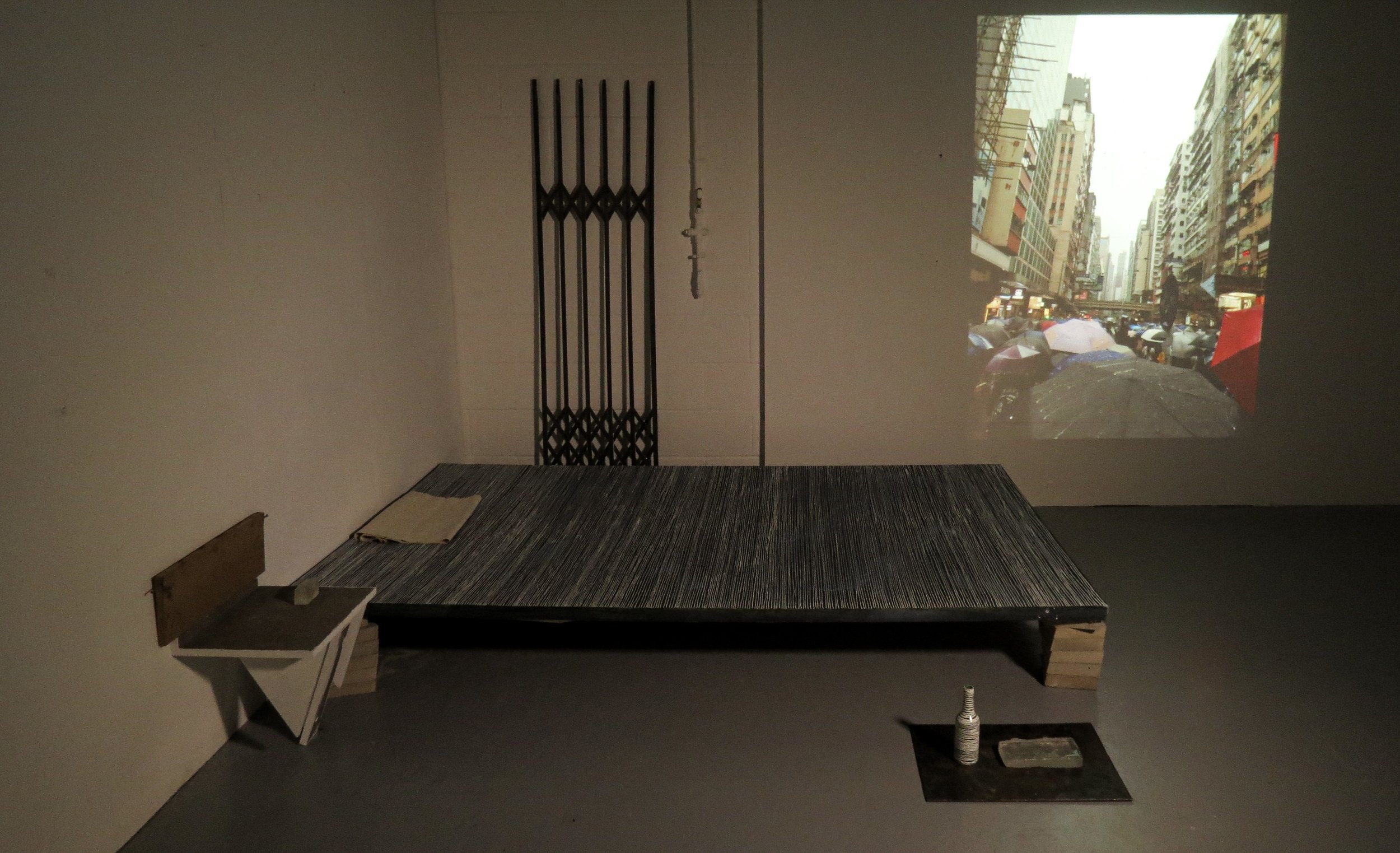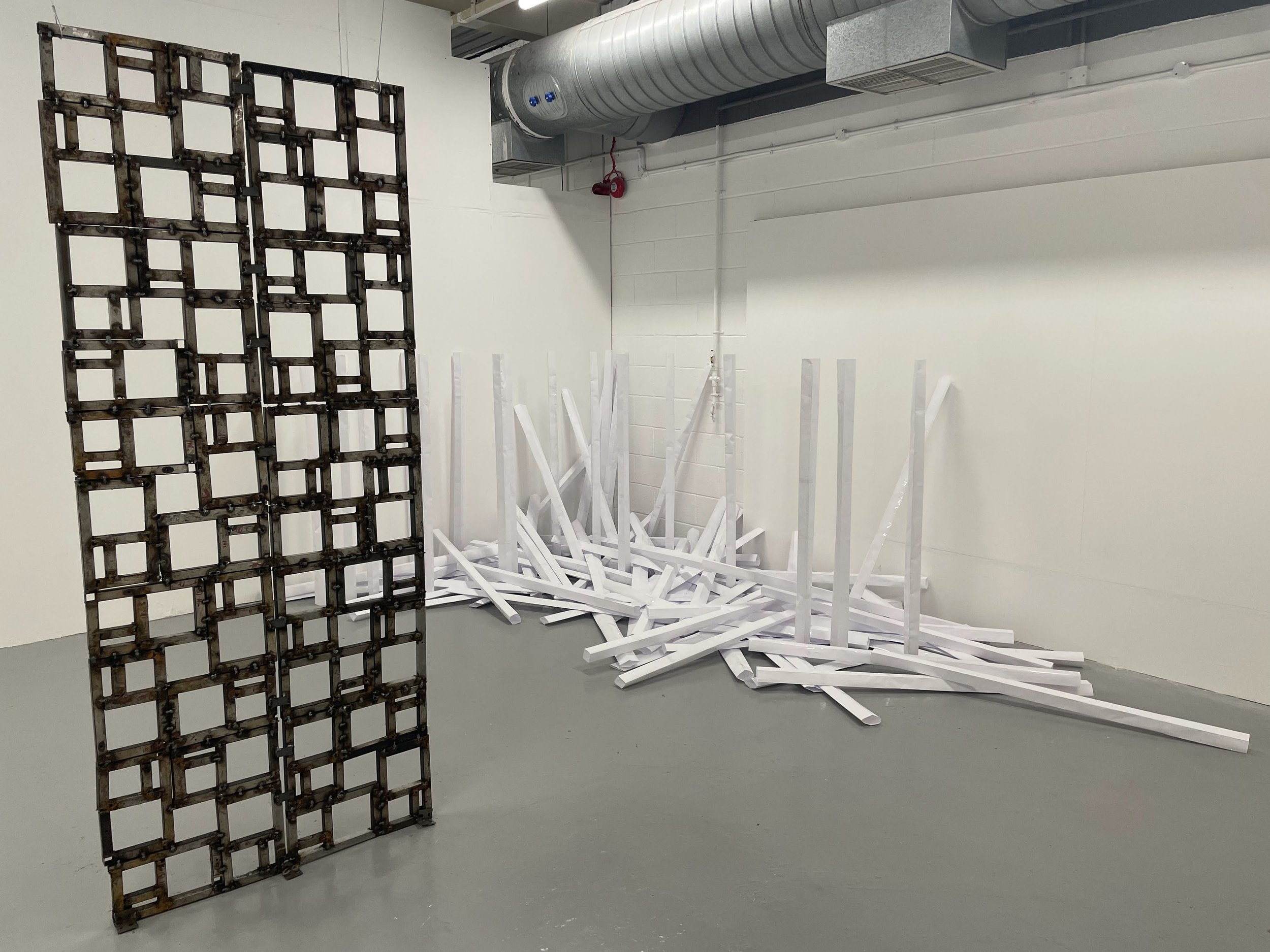Artist in conversation: jason Kwong
“ Creating is a job for artists and destruction is a chance to learn their spirit ”
Jason Kwong is an emerging contemporary abstract artist from Hong Kong, currently based in the UK. His creative exploration centers on the intricate dance between inner peace and the chaotic external world, employing geometrical shapes as his primary language. Influenced by pivotal art movements like De Stijl, Minimalism, and Suprematism, Jason's work reflects a deep appreciation for the simplicity and clarity these styles embody.
With a profound connection to his birthplace, Hong Kong, Jason's art is infused with the spirit of social movements that have shaped his perspective and motivation. He believes in the power of art to transcend cultural barriers and communicate universal truths without the need for words.
Working predominantly with sculptures crafted from materials such as steel, concrete, silicone, and glass, Jason’s art embodies a formalistic approach aimed at highlighting the fundamental forms that connect human experiences. His process often involves 3D printing and casting, allowing him to explore the potential of geometry in representing the essence of our visual world.
As Jason continues his artistic journey, he remains committed to creating works that not only reflect his unique position between two realms but also invite viewers to find their own peace within the complexities of life. Through his sculptures, Jason Kwong aspires to bridge gaps, provoke thought, and inspire a deeper engagement with the abstract narratives that bind us all.
What initially inspired you to become an artist, and how did you develop your unique style?
Present complex questions on politics and argument among us is the inspiration for me to create art for escaping physical reality. That is why my art is minimalistic and systematic in character. I see it as my utopia, and I found creating it as meditative and meaningful.
In terms of subject matter, what themes or motifs do you frequently explore in your work, and what draws you to these topics?
My art is imbued with art history and movements, specifically influenced by several modernist artists like Piet Mondrian, Carl Andre, and Constantin Brancusi. From inspirations of deconstructionism in De Stijl by Mondrian to an absolute materiality interest from Andre’s works, to the avant-garde attitude of Brancusi. I see their great affections in guiding my execution and trigger my interest in minimalism.
How do you navigate the balance between self-destruction and re-creation as a way towards conscious Happiness?
Creating is a job for artists and destruction is a chance to learn their spirit. I think the journey of becoming and being an artist is meant to be tough, happiness is extra to me as always. I do not think there is a balance between self-destruction and re-creation, as an artist faces both phases at the same time as breathing.
Can you discuss a specific piece or project that challenged you as an artist, and how you overcome those challenges?
I think adapting and learning new material is a challenge to me. As an artist who works with material interest, it is exciting to play with new materials, but at the same time, frustrated to fail endlessly. A recent project I am working on is making glass brick for sculpture. Glass is new to me as a sculptor's medium. It is rare to find glass technicians to share their knowledge, so it really requires me to train my patience to overcome the technical problems.
How do you stay connected with other artists and keep up with new developments and trends in the art world?
I am not a good chatterbox; I speak better in my visual language. The most important way to stay connected with others is to create more subjects, more content to be discussed. And events in London like previews in the Holy Art Gallery is also a treasurable chance for me to know more artists. I believe new trends and development is crucial to know, but I would rather not be consumed by the new trend and lose myself.
How do you incorporate feedback from critics and audiences into your artistic practice, and how do you balance this feedback with your own artistic intuition?
I think at the end, the artwork is my own language, I will adapt to comments and critics, but I will also trust in my instincts as an artist and feel free and flexible to be myself and make my own work. So, trust in myself and confidence is the answer.
How do you stay motivated and inspired despite any setbacks or creative blocks you may encounter?
Work and reminding myself not to be fragile is necessary when I have any setbacks. I do not have any creative blockage since I keep on creating, even the idea itself is not creative, so there is no blockage. Creative blockage exists for artists who are afraid to step forward.
How do you feel about exhibiting your artworks with The Holy Art Gallery?
Exhibiting in The Holy Art Gallery is an honourable offer to me. It provides a place for me to know more artists from around the world and understand different perspectives through conversations. The liveliness and freshness of the gallery is absolutely enjoyable.
Looking ahead, what are your long-term goals and aspirations as an artist, and how do you plan to achieve them?
A long term-goal for me is to have my works and collections in a public gallery, and to also exhibit my work internationally. I hope my work could connect with viewers, in terms of my perspective on societies and the present world. To achieve that, the only way is to stay tough and create more “vocabularies” in my visual language system, so that there will be enough content for art-lovers to discuss.






